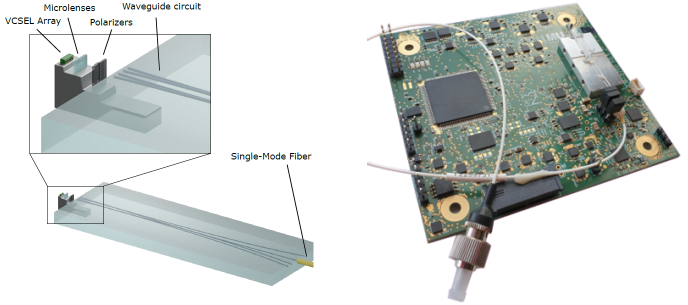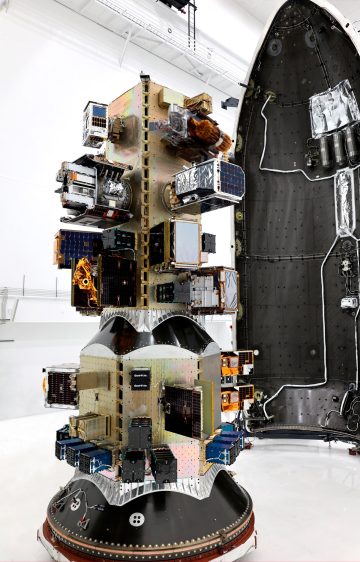QUBE: towards economic QKD in space
For QKD the quantum channel can be either an optical fiber or a freespace channel. Yet, the show a very different scaling of the loss depending on the link distance. While fiber-based systems with exponential damping of the signal are surely beneficial in metropolitan areas and distances of about 50 km - 150 km, free-space systems have only quadratic losses due to expanding beams. Hence, as demonstrated by the MICIUS
mission [1], exchange of a key is possible between a satellite and an optical ground stations (OGS), thereby indeed enabling QKD on a global scale [2].
While MICIUS, with a mass of more than 600 kg, was a truly large mission, the QUBE missions are focussing on a more economic solution for global key exchange. Small satellites (cube satellites assembled in multiples of 10x10x10cm3 cubes) are currently revolutionizing numerous applications in space like earth observations or ubiquitous internet connection. Provided QKD payloads can operate with a small size, weight and power (SWaP) profile, also secure key exchange can benefit from this game-changing technology.

The optical design of the LMU board. Four vertically surface emitting laser diodes (VCSELs) are focused using microlenses such that their emitted light is polarized and subsequently coupled into a waveguide circuit to spatially overlap the four modes. One outgoing mode of the waveguide is coupled into a single-mode fiber. (Right) Fully integrated quantum key distribution sender module with optical package (housing removed) at the top right corner.
The first mission, QUBE, will test two different, highly integrated QKD sender modules together with an integrated quantum random number generator (QRNG) in a three-unit CubeSat. It is planned that QKD signals will be exchanged between the satellite at a low earth orbit (LEO) at about 500 km above earth with the OGS located at the DLR in Oberpfaffenhofen, Germany. The two quantum payloads and an optical terminal (aperture 20 mm) will occupy approximately one unit in volume, with the remaining two liters required for system operation including power supplies, reaction wheels and a star tracker. Given the small aperture and the resulting low link efficiency, QUBE will not be capable of performing secure QKD with pulses of an average intensity below 1 photon intensity per pulse. But it will enable us to show the capability of generating QKD signals and sending them precisely to the ground station also with a small satellite.

QUBE packed in one of the launch boxes on the deployer of the transporter 11 mission of SpeceX
QUBE was launched on August 16, 2024. The tests will start now and we hope to show the first results here, soon.
QUBE-II will provide not only of a large aperture of 9 cm but also of all the onboard computing capabilities to perform the full QKD key sifting, error correction and privacy amplification in order to generate a secure key with a ground station. It is under development now and will be launched in 2026.
QUBE are joint research missions from the Max Planck Institute for the Science of Light (MPL), the Friedrich Alexander University of Erlangen-Nürnberg (FAU), OHB System AG, the Center for Telematics (ZfT), the German Aerospace Center (DLR) IKN, and the Ludwig Maximilians University Munich (LMU), financed by the BMBF.

